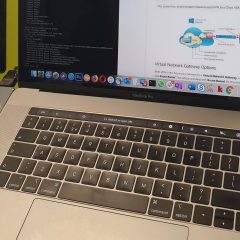Mac OSX – GNS3 Connecting To the Internet
KB ID 0001170 Problem I have a love hate relationship with GNS3, I appreciate it’s brilliant, (when it works). I also appreciate that it’s free, and people put a lot of effort into its development for very little reward. But when I try to do simple things, like connect my projects/labs to the internet and it’s massively overcomplicated I get pretty exasperated. With Windows this is easy, (I’ve probably blogged...
Cisco ISE – Basic 802.1x With WindowsPart Four – Configuring The Windows Clients (Supplicants)
KB ID 0001083 Problem Back in Part Three we setup the switches ready to plug in our clients. I’m going to configure the Windows clients by Group Policy. But I suggest you carry out tests using single Windows clients and LOCAL policy until you know you have everything setup correctly. WARNING: Rolling this out without adequate testing, can resolve in all your Windows clients falling off the network Solution 1. On a DC or a...


